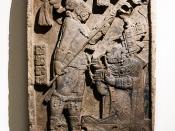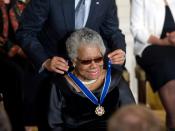Ben Sweet once said, "The greatest success is successful self-acceptance." The characters in Jeanne Wakatsuki Houston's Farewell to Manzanar, Maya Angelou's I Know Why the Caged Bird Sings, and Ayn Rand's Anthem all learn about and accept themselves for who they are by the end of these novels. The main characters, Jeanne Wakatsuki, Maya Angelou, and Equality 7-2521, respectively, are very different but also similar individuals who go through significant changes in the courses of the novels by overcoming oppression.
Internment by one's own country in a camp away from anything that a child has known would unquestionably change that child's viewpoint of themselves and of life. Jeanne Wakatsuki Houston writes of confinement in a Japanese internment camp during the years of World War II in Farewell to Manzanar. Houston's realizations about the world and, ultimately, herself are presented in the narration. After Pearl Harbor is bombed by the Japanese, all people of Japanese ancestry - even the ones who are U.S.
citizens - are put into internment camps. Jeannie and most of her family (excluding her father) are put in Manzanar, which means apple orchard in Spanish. At Manzanar they are given small barracks to live in and enough food and water, but there is still the indignity of being thought of as "the enemy" by the Americans. Jeanne depicts political life in the camp, as well as some outside interviews and events relating to it. In camp there is the question of loyalty to Japan as opposed to American loyalty. The people "too" cooperative with the Caucasian officers and the people who were "too" loyal to the U.S. were called inu, the Japanese word for dog. Although Jeanne shows the political frustrations of the internees, she also portrays scenes of everyday life, such as dances, school, and...


